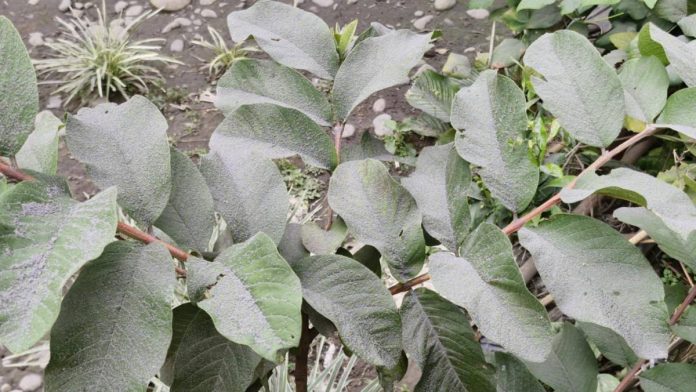
ILOILO City – In the wake of Mount Kanlaon’s explosive eruption on Tuesday, April 8, the Department of Tourism (DOT) has suspended all tourism activities near the volcano in Negros Island, citing public safety concerns as ashfall blankets parts of Negros and nearby Panay Island.
The suspension — immediately effective — covers all treks, tours, and visits in affected areas including La Carlota City, Bago City, La Castellana, and other municipalities near the volcano in Negros Occidental, according to a DOT advisory.
The move was made in coordination with DOT’s regional offices in Western and Central Visayas and with local government units (LGUs).
“As a precaution, we urge tourists to postpone any plans to visit areas near Mt. Kanlaon and comply with the safety protocols issued by local authorities,” the advisory stated.
Mount Kanlaon, straddling Negros Occidental and Negros Oriental, is not only one of the most active volcanoes in the Philippines, but also one of the most scenic and ecologically significant. Its tourism appeal is centered around its natural beauty, adventure tourism opportunities, and cultural relevance.
The Philippine Institute of Volcanology and Seismology (PHIVOLCS) has raised the volcano’s alert level to 3 due to intensified and/or magmatic unrest. It recorded at least 12 volcanic earthquakes and noted ground deformation (volcano’s edifice is inflated). It also observed continuous degassing.
Phivolcs recommended evacuation from the six-kilometer radius from the volcano’s summit.
Adventure and Eco-Tourism
Mount Kanlaon is a favorite among hikers and mountaineers, known for its challenging treks, stunning summit views, and biodiverse landscapes. It stands as the highest peak in the Visayas at 2,465 meters above sea level, making it a bucket-list climb for outdoor enthusiasts. Popular activities include:
* Trekking and Mountaineering – The volcano has several established trails such as the Wasay Trail (Bacolod side) and the Guintubdan and Mapot Trails (La Carlota and Canlaon sides). These vary in difficulty and duration, attracting both amateur and seasoned climbers.
* Camping and Bird Watching – Mount Kanlaon is part of the Mount Kanlaon Natural Park (MKNP), which is rich in flora and fauna, including endemic bird species and rare plants.
* Waterfalls and Springs Exploration – Trails often lead to waterfalls and natural springs, adding to the variety of eco-tourism attractions.
In Negros Oriental, Canlaon City has enforced a no-entry policy within the six-kilometer extended danger zone. As a result, all tourist attractions in the city have been closed since the alert upgrade.
Ashfall has been reported in several barangays of La Carlota City, with scattered ash also reaching parts of Iloilo, Guimaras, and Antique. Despite this, there have been no reports of injuries or structural damage to tourism facilities. DOT regional offices confirmed that all accommodations and related infrastructure remain structurally sound.
No tourists have been reported stranded so far. Nevertheless, the DOT has activated its Tourist Assistance Call Center and urged local tourism offices near Mt. Kanlaon to mobilize emergency support teams for affected visitors.
Protected Area and Biodiversity
As part of the Mount Kanlaon Natural Park, the volcano is a protected area under the National Integrated Protected Areas System (NIPAS). The park spans across municipalities and cities like La Castellana, La Carlota, Bago, and Murcia in Negros Occidental, offering:
* forest reserves
* rich wildlife habitats
* agricultural landscapes at the foothills, such as sugarcane plantations, fruit orchards, and flower farms, which also draw tourists
Cultural and Community-Based Tourism
Communities around Mount Kanlaon have developed community-based tourism programs:
* Agri-tourism – Visitors can experience farm stays and learn about sustainable agricultural practices.
* Cultural immersion – Local festivals and indigenous heritage, especially in areas like La Castellana and La Carlota, give travelers a taste of Negrense culture.
* Eco-guides and porters from local barangays are often involved in treks, making tourism a livelihood source for many residents.
Vigilance
The public is advised to remain alert, avoid circulating unverified information, and follow official updates from Philvolcs and disaster risk agencies.
For information or assistance, the public may contact the following:
DOT Tourist Assistance Call Center
* Hotline – 151-TOUR (151-8687)
* Mobile – 0954-253-3215
* Facebook Messenger: Department of Tourism – Philippines
* Email: touristassistance@tourism.gov.ph
* Webchat: beta.tourism.gov.ph
* Emergency Hotline: 911
* Negros Occidental Provincial Disaster Risk Reduction and Management Office: (034) 488-7030
* Negros Occidental Tourism Division (Mobile Number): 0909 977 0007; (Landline): (033) 432-0852./PN




